Contents
- Description
- Why is the Porcini mushroom called white?
- Bedspread and spore powder
- When and in which forests do porcini mushrooms grow?
- Types of porcini mushrooms, names and photos
- Porcini mushroom net (boletus net) (Boletus reticulatus)
- Porcini mushroom dark bronze (hornbeam) (Latin Boletus aereus)
- Porcini birch mushroom (spikelet) (Latin Boletus betulicolus)
- Pine cep (upland, pine-loving boletus) (Boletus pinophilus)
- Pine cep (Latin Boletus pinophilus)
- Oak cep (lat.Boletus edulis f. Quercicola)
- Useful properties of porcini mushrooms, vitamins and minerals
- Porcini mushroom harm
- How to distinguish a Porcini mushroom from a false one?
- Growing porcini mushrooms at home on a personal plot
- There are 2 main ways to grow porcini mushrooms in the country at home:
- Interesting facts about porcini mushrooms
Description
Porcini mushroom (Boletus edulis) is a type of mushroom that belongs to the basidiomycete department, agaricomycete class, boletus order, boletus family, boletus. This is the most colorful representative of the mushroom kingdom.
The abbreviated name of the mushroom is simply “white”, some call it boletus. Even inexperienced mushroom pickers easily recognize the “forest celebrity” and fill their baskets with it.
Why is the Porcini mushroom called white?
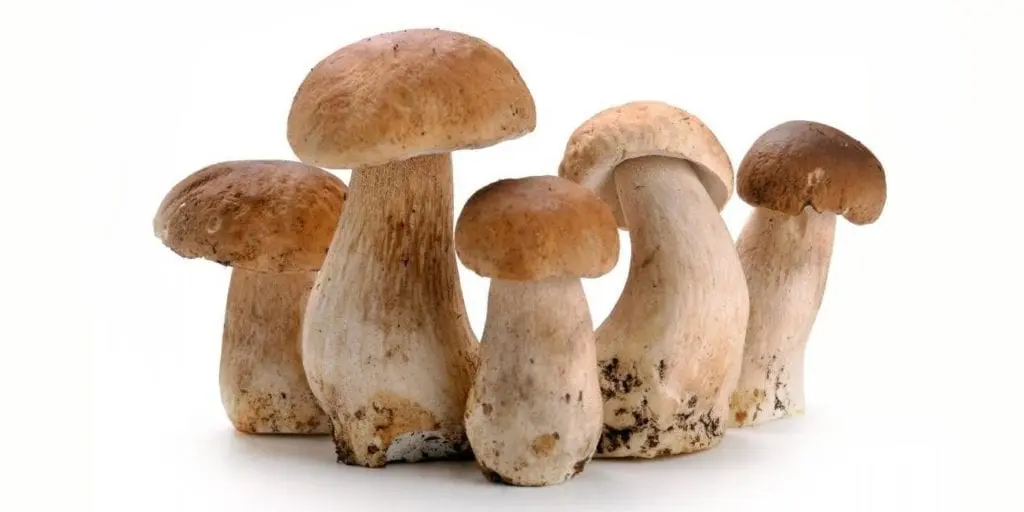
The porcini mushroom got its name in ancient times, when mushrooms were more often dried than fried or stewed. The marble pulp of the porcini mushroom remains perfectly white even after heat treatment and drying. People noticed this feature and called the mushroom with a dark cap exactly white. Another version of the name is associated with the opposition of the porcini mushroom to the less tasty and less valuable “black” butcher, the flesh of which darkens on the cut.
Hat
All mushrooms of the boletus genus have an amazingly delicate aroma and piquant taste.
The brownish-brown cap of a mature porcini mushroom grows on average up to 7-30 centimeters in diameter. But in some latitudes, subject to heavy rains and mild temperatures, porcini mushrooms also appear with a cap diameter of 50 centimeters.

Determining the age of the mushroom is quite simple: in a young porcini mushroom, the cap has an almost artistically derived convex shape, overripe mushrooms are flatter, sometimes even outstretched in appearance. The surface of the porcini mushroom cap in most cases has a pleasant to the touch, slightly velvety texture, the upper skin is tightly connected to the pulp, so it is difficult to separate from it.
In dry and windy weather, the cap becomes covered with a network of small but deep wrinkles or cracks, which leads to damage to the internal pores of the fungus. In rainy weather, a thin film of mucus can be seen at the top of the cap.
The color of the cap of the porcini mushroom can be varied – from reddish brown to almost milky white. The older the mushroom, the darker and denser the cap becomes, and the skin acquires a characteristic roughness.
Pulp
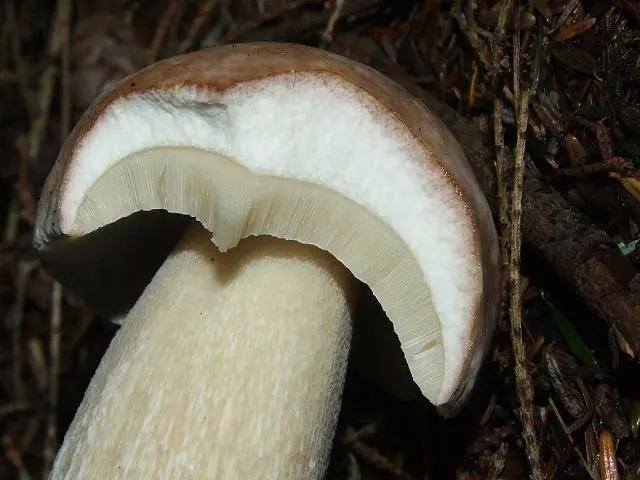
The flesh of a ripe porcini mushroom is firm, juicy and mostly fleshy, with an attractive white color. In old mushrooms, it turns into a fibrous structure, the shade of the pulp acquires a slightly yellow or light beige tone.
Leg
The height of the leg of the porcini mushroom is small, on average it reaches 12 centimeters, but you can also meet more “tall” representatives, the leg of which reaches 25 centimeters in height. The diameter of the leg is 7 cm, less often – 10 cm.
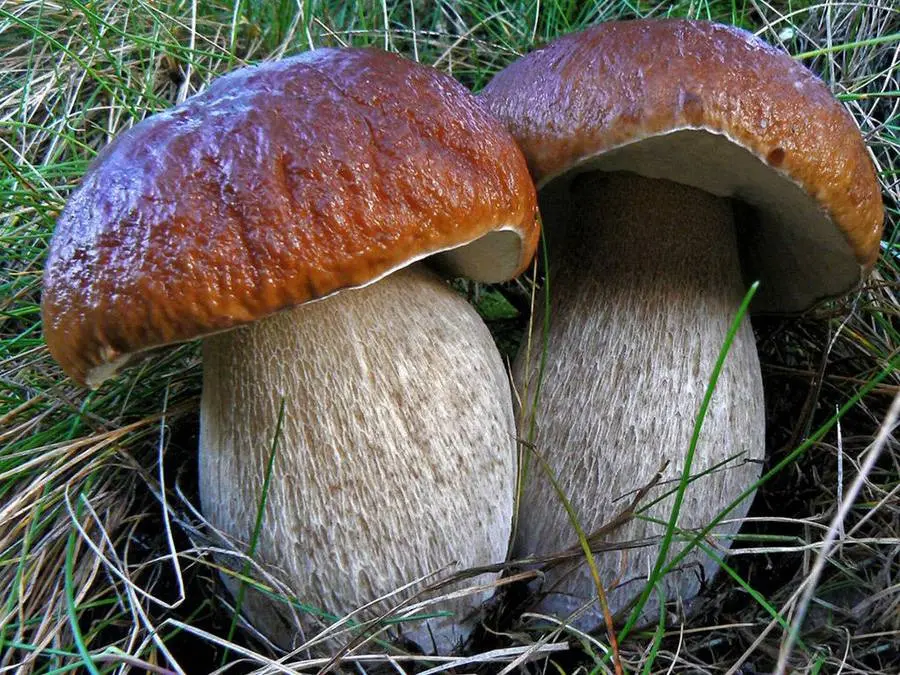
A distinctive feature of the porcini mushroom is the shape of its stem: it is barrel-shaped or clavate; over time, in old mushrooms it becomes cylindrical, slightly elongated in the center and thick at the base and cap. Its color ranges from white to deep brown, sometimes with dark red spots.
There are porcini mushrooms, the colors of the caps and legs of which are almost completely identical. Often, at the base of the cap, the leg has a net of light thin veins, sometimes almost indistinguishable against the main background of the skin.
Bedspread and spore powder
The remains of the bedspread are not observed in the porcini mushroom – the base of the stem is perfectly clean.
Spore powder of a juicy olive-brown hue, the spores of porcini mushrooms themselves resemble a spindle in shape, their dimensions are strikingly tiny: 15.5 x 5.5 microns. The tubular layer is light, then turns yellow, acquiring an olive green hue.
Porcini mushrooms grow on all continents, except for the too arid Australia and cold Antarctica. It is found everywhere in Europe, in North and South America, in Mexico, in the territories of China, Japan and in the northern regions of Mongolia, in North Africa, in the British Isles, in the Caucasus, Kamchatka, the Far East, in the middle and southern latitudes.
Very often porcini mushrooms can be found in the northern taiga, in the European part of Russia and in the Far East.
When and in which forests do porcini mushrooms grow?
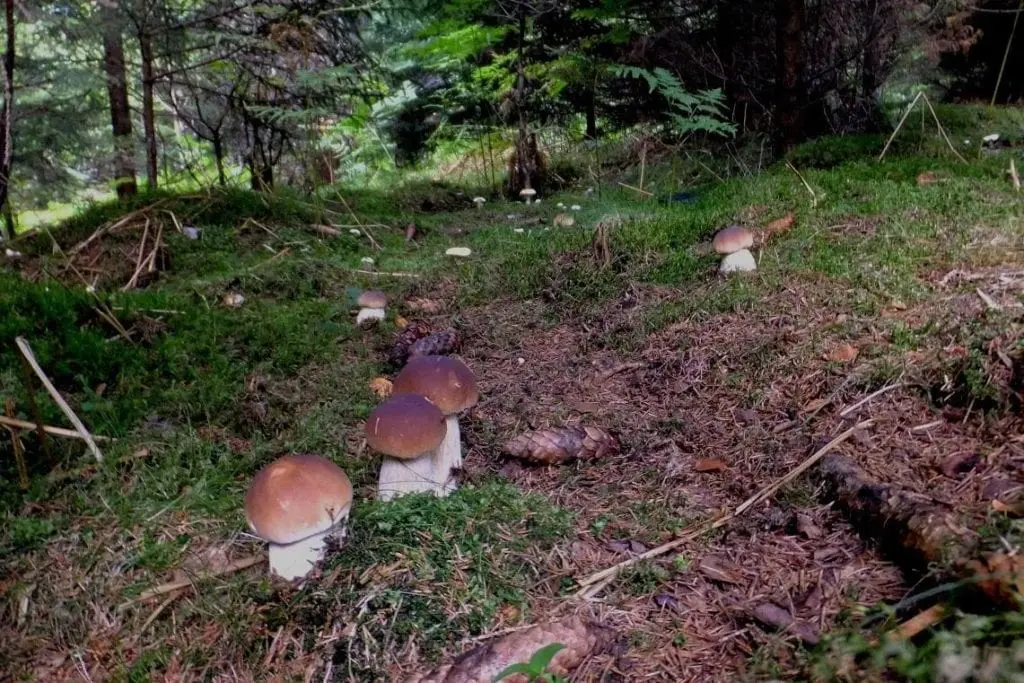
The growth cycle of porcini mushrooms is very variable and depends on the place of growth. Porcini mushrooms begin to grow in May or June, and the abundant appearance of mushroom islands ends in late autumn – in October-November (in warm regions).
In the northern regions, the porcini mushroom grows from June to September, and the mass harvest begins in the second half of August. The growth phase of the boletus is rather long: it reaches maturity only in a full week.
Mushrooms grow in families or ring colonies, so meeting even one porcini mushroom in the forest often promises a mushroom picker.
Porcini mushrooms grow both in coniferous and deciduous or mixed forests under trees such as spruce, pine, oak, birch, hornbeam, and fir. The collection of porcini mushrooms can be carried out in areas covered with moss and lichen, on sandy, sandy loam and loamy soils, but these mushrooms rarely grow on swampy soils and peat bogs.
The cep loves sunlight, but it can also grow in darkened areas. The mushroom grows poorly with waterlogged soil and low daily air temperatures. Porcini rarely grow in the tundra and forest-tundra, forest-steppe, and in the steppe regions, Porcini are not found at all.
Types of porcini mushrooms, names and photos
Among porcini mushrooms, the following varieties are considered to be the most famous:
Porcini mushroom net (boletus net) (Boletus reticulatus)
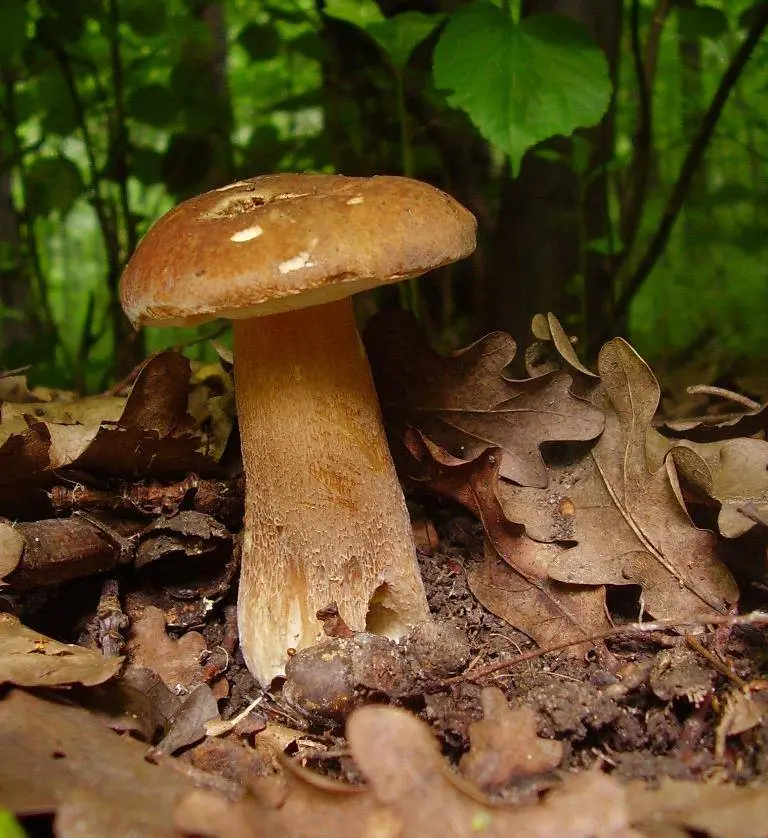
Edible mushroom. Outwardly, it looks like a flywheel, has a brown or ocher hat, sometimes with an orange tint, located on a short cylindrical leg. The net on the stem of the mushroom is white or brown. The hat has a diameter of 6-30 cm. The flesh is white.
The cep is found in the reticulated beech, oak, hornbeam, chestnut forests of Europe, North America and Africa, in the Caucasus. Occurs in June-September, but not too often.
Porcini mushroom dark bronze (hornbeam) (Latin Boletus aereus)
Porcini birch mushroom (spikelet) (Boletus betulicola)
A feature of the species is the very light, almost white color of the cap, which reaches 5-15 cm in diameter. Less often, its color has a slightly creamy or light yellow tint. The stem of the mushroom is barrel-shaped, white-brown in color, has a white mesh in its upper part. On the cut, the mushroom does not turn blue, the pulp of the mushroom is white.

The birch Porcini mushroom grows exclusively under birches, it is found throughout the habitat, where there are birch forests and groves, along roads and on the edges. Fruiting from June to October, singly or in groups. It often grows throughout Russia, as well as in Western Europe.
Porcini birch mushroom (spikelet) (Latin Boletus betulicolus)

Pine cep (upland, pine-loving boletus) (Boletus pinophilus)
A type of porcini mushroom with a large dark-colored cap, sometimes with a purple tint. The cap has a diameter of 6-30 cm. The flesh of the mushroom under the thin skin of the cap has a brownish-red color, it is white in the stem, does not turn blue on the cut. The leg of the mushroom is thick, short, white or brown in color, has a light brown or reddish mesh.
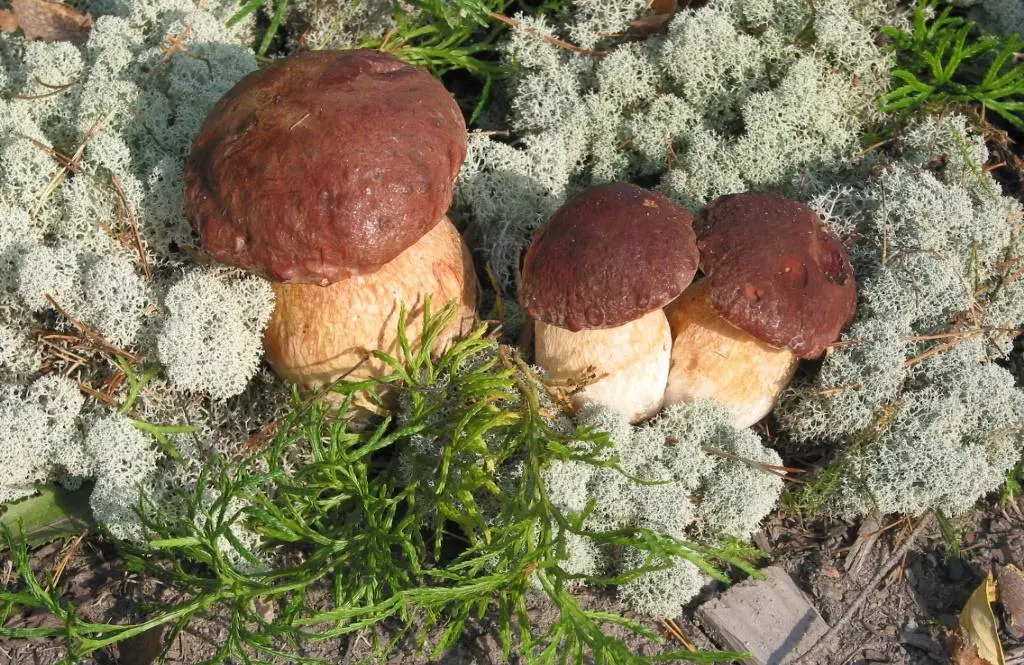
Pine cep grows in pine forests on sandy soils and in the mountains, less often in spruce and deciduous forests, is found everywhere: in Europe, Central America, Russia (in the northern regions of the European part, in Siberia).
Pine cep (Latin Boletus pinophilus)
A mushroom with a brown cap, but not brownish, but with a gray tint, sometimes light spots are “scattered” on the cap. The flesh of this species is loose and less dense than that of other varieties of Porcini.
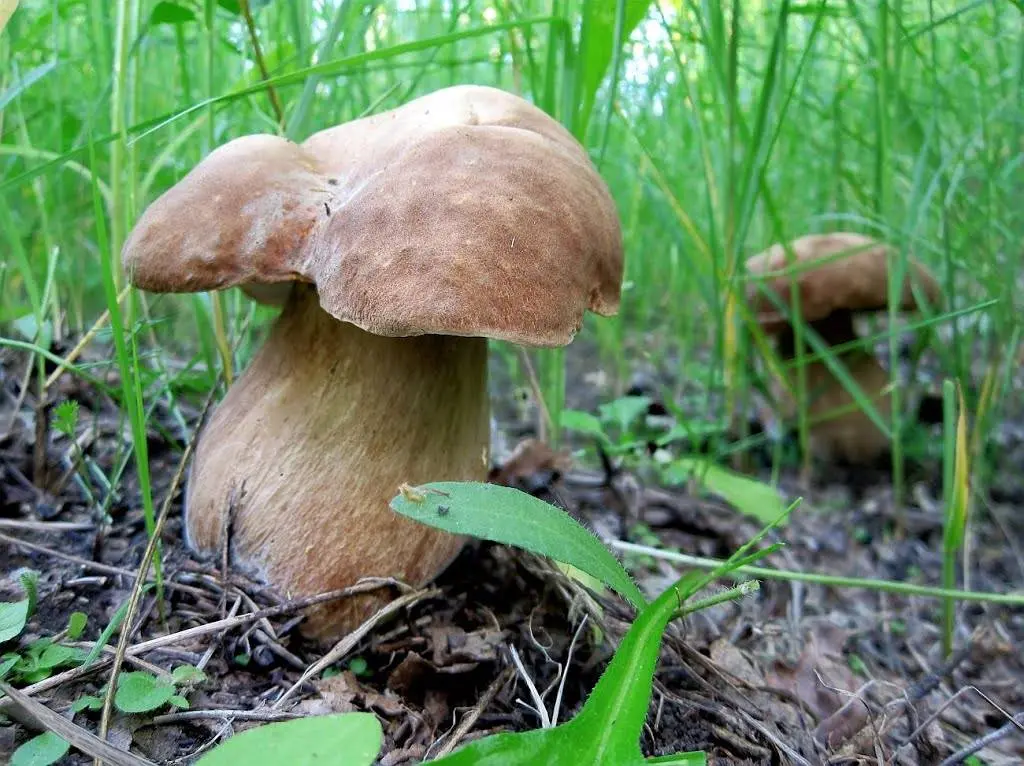
Porcini oak mushroom can be found in the oak forests of the Caucasus and Primorsky Territory, it is often found in central Russia and in its southern territories.
Oak cep (lat.Boletus edulis f. Quercicola)
Spruce mushroom (Boletus edulis f. Edulis)
The most common Porcini mushroom. The leg is elongated and has a thickening at the bottom. The mesh reaches a third or half of the leg. The hat has a brown, reddish or chestnut color.

Spruce Porcini mushroom grows in fir and spruce forests in Russia and Europe, except for Iceland. The porcini mushroom appears in June and bears fruit until autumn.
Useful properties of porcini mushrooms, vitamins and minerals
Due to its high mineral content, porcini mushroom is one of the most popular and beneficial mushrooms. Why is porcini mushroom useful?
- First of all, there is an optimal amount of selenium in the pulp of the porcini mushroom, which can cure cancer in the early stages.
- Ascorbic acid, which is contained in Porcini, is essential for the normal functioning of all organs.
- The fragrant delicacy white pulp contains calcium, iron vital for the human body, as well as phytohormones, which help to reduce inflammatory processes in the body.
- Riboflavin, which is part of the porcini mushroom, helps to normalize the thyroid gland, and also improves hair and nail growth.
- B vitamins contained in Porcini have a beneficial effect on the nervous system, energy metabolism, memory and brain function, protect the skin and mucous membranes from infections, are responsible for sound sleep, good mood and appetite.
- Lecithin of the porcini mushroom is beneficial for atherosclerosis and anemia, helps cleanse blood vessels from cholesterol.
- The value of the porcini mushroom also lies in the presence of B-glucan, an antioxidant that protects the human immune system and fights fungi, viruses and bacteria.
- Ergothioneine in the Porcini fungus stimulates the renewal of body cells, and is also useful for the kidneys, liver, eyes, and bone marrow.
- Also porcini mushroom perfectly stimulates the secretion of digestive juices.
- Porcini mushroom is low-calorie, 90% water, perfect for drying, fried and stewed, pickled for future use for the winter. The taste of the cooked pulp is unusually soft; immediately after cleaning, it gives off an attractive mushroom smell, which only intensifies after heat treatment. The porcini mushroom has the strongest aroma after proper drying, when the pulp gradually loses moisture.

Any mushroom is quite difficult for human digestion. But it is dried porcini mushrooms that are most accessible for digestion, since in dried form, the human body assimilates up to 80% of the proteins of the porcini mushroom. It is this form of mushroom that nutritionists recommend.
Porcini mushroom harm
Porcini mushroom is an edible mushroom, but it can also be poisoned in several cases:

- The Porcini mushroom contains chitin, which is difficult for the child’s body, pregnant women, people with diseases of the digestive system and kidneys to absorb. Even porcini broth can lead to exacerbations.
- Porcini mushrooms, like any other mushroom, accumulate toxic heavy metals contained in the ground. That is why you need to be careful and in no case do not pick mushrooms that grow within the city or near industrial enterprises, landfills, waste, near highways.
- The third reason for feeling unwell when eating porcini mushrooms is the occurrence of an allergic reaction to mushroom spores.
- And, of course, the use of a dangerous double of a porcini mushroom, which is called a gall mushroom or bitterness, can lead to poisoning.
The simplest advice for people who do not understand mushrooms and may confuse porcini with bile is not to pick mushrooms that turn blue (turn pink, turn red) when cut and have a bitter taste!
How to distinguish a Porcini mushroom from a false one?
Pulp

One of the main differences between the porcini mushroom and the false gall fungus is the cut color. When cut, the flesh of the gall fungus darkens and becomes pinkish-brown. The flesh of the porcini mushroom does not change color and remains white.

Leg
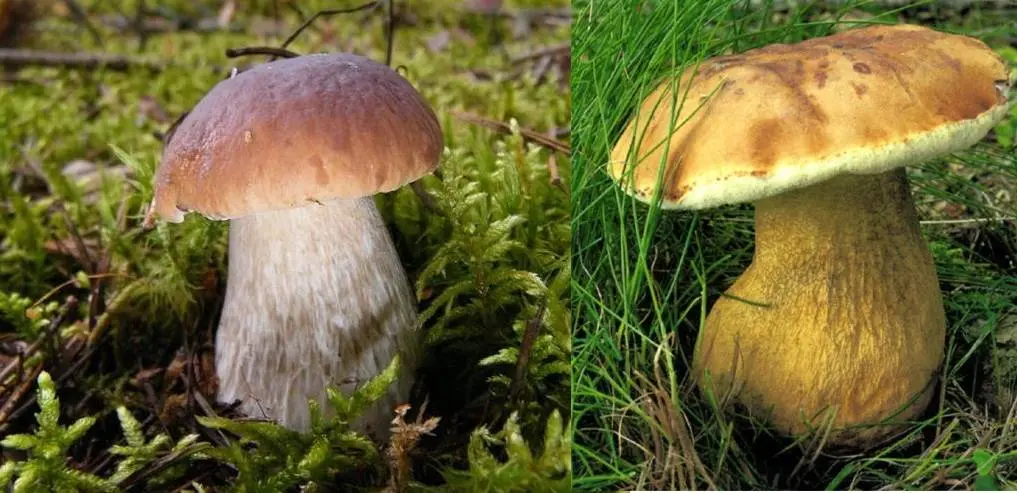
The gall fungus has a rather bright mesh-like pattern on the stem, which the edible porcini mushroom does not have.
Hymenophore
The tubular layer of the false ceps is pinkish, while that of the true ceps is white or yellow.
Taste
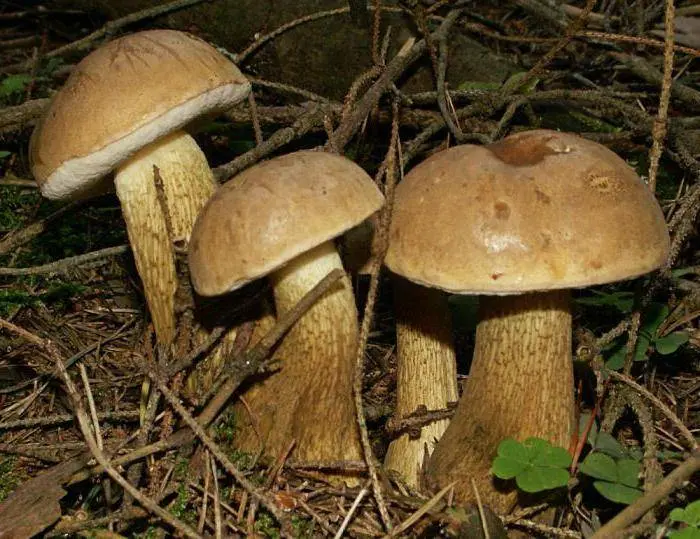
The false Porcini mushroom is bitter, unlike the edible Porcini one. Moreover, the bitter taste of the gall mushroom does not change during boiling or frying, but it can decrease during pickling due to the addition of vinegar.
Growing porcini mushrooms at home on a personal plot
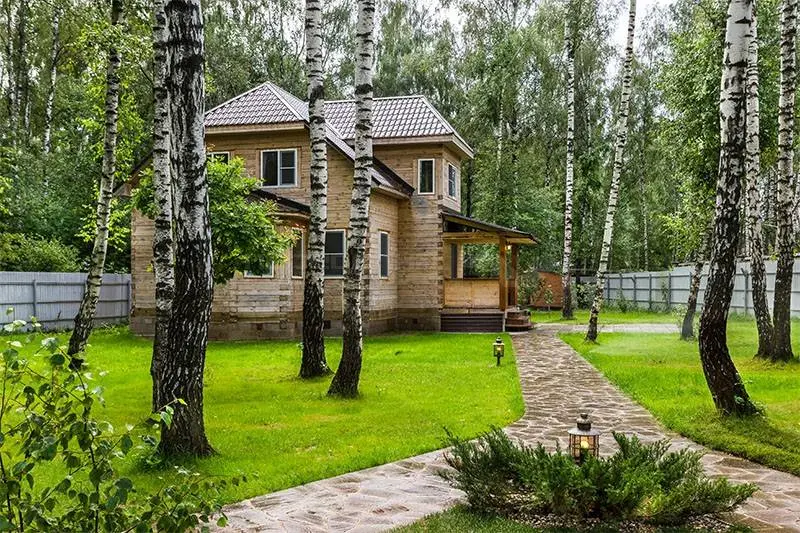
Many are wondering how to plant and grow a porcini mushroom in their summer cottage. The technology of growing porcini mushrooms at home or on a personal plot is not at all difficult, although it takes time, requires perseverance and maximum accuracy from you.
When planning to grow porcini mushrooms, take into account one nuance: the porcini mushroom is a forest dweller, so it cannot exist without symbiosis with a tree. An ideal option if the plot of land will be adjacent to the forest, although a plot on which only a few individual trees grow – pine, a pair of aspens, birch, oak or spruce, is also suitable. It is desirable that the trees be at least 8-10 years old.
There are 2 main ways to grow porcini mushrooms in the country at home:
- growing from mycelium;
- growing from spores in the mushroom cap.
- Let’s consider each of them in more detail.
Growing porcini mushrooms from mycelium

The first step is to purchase high-quality planting material, that is, buy porcini mycelium in a specialized store. Now you need to start preparing the selected area for direct planting. This can be done from May until the end of September – later there is a possibility of frost, which can nullify all your efforts.
Around the trunk of a tree (pine, birch, oak, aspen, spruce), it is necessary to bare the soil, removing 15-20 cm of the top layer from its surface, thus creating a circle with a diameter of 1-1.5 meters. The soil must be saved for the subsequent cover of the site.
Peat or well-rotted compost is laid on the formed area: the thickness of the fertile layer should not exceed 2-3 cm.
Pieces of the purchased porcini mushroom mycelium are laid out on the prepared soil, this is done in a checkerboard pattern, and it is advisable to maintain a distance between the pieces of mycelium of 30-35 cm.
The next step is to carefully cover the laid Porcini mushroom mycelium with a layer of soil that you removed at the very beginning. Planting must be watered carefully and abundantly (2.5-3 buckets for each tree). It is advisable to do this very carefully so as not to erode the soil.
The watered area is mulched with a layer of straw 25-35 cm thick, which will maintain the desired humidity and prevent the mycelium from drying out. In the future, watering is carried out a couple of times a week, adding top dressing to the water, for example, the Baikal EM-1 complex.
Before the onset of frost and before the snow falls, the mushroom plot is covered with forest moss, spruce branches or a layer of fallen leaves to create a frost blanket. In early spring, this cover is carefully removed with a rake.
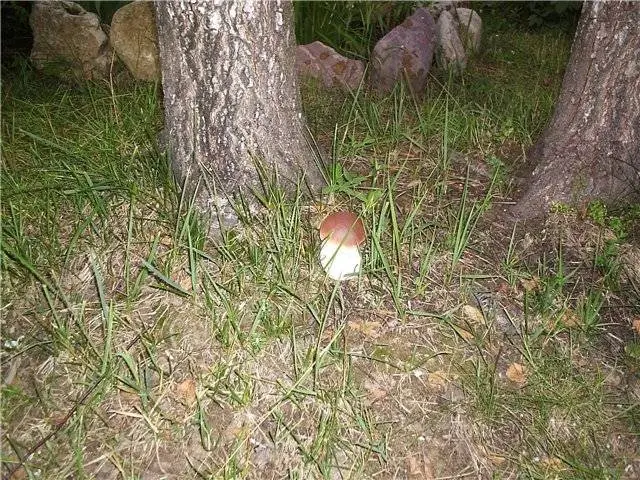
The first harvest of aromatic porcini mushrooms is obtained in a year, and with proper care of the established mycelium, that is, with timely watering and feeding, such a “home plantation” of porcini mushrooms can bear fruit for 3-5 years.
Growing porcini mushrooms from caps
For this method, you will need to go into the forest and get caps from mature, or even overripe, porcini mushrooms. The diameter of the cap should not be less than 10-15 cm. It is optimal if the pulp of the mushroom at the fracture has a greenish-olive tint, which indicates the ripening of the spore powder.

When picking porcini mushrooms, pay attention to which trees you cut them, because it is under the same trees that you should plant them on your site. A porcini mushroom growing under a birch in a forest thicket is unlikely to take root under a pine or oak.
The caps of porcini mushrooms are separated from the legs and, at the rate of 7-12 caps per bucket of water (preferably rainwater), they are soaked for 24 hours. It is advisable to add alcohol (3-5 tablespoons per 10 l) or sugar (15-20 g per 10 l) to the water. Please note that all mushrooms, and even more overripe, quickly deteriorate, so you need to soak them as soon as possible after picking, but no later than after 8-10 hours.
A day later, carefully knead the soaked mushroom caps with your hands until a homogeneous jelly-like mass, filter it through a layer of gauze, thereby separating the aqueous solution with mushroom spores from the mushroom tissue. You do not need to throw out the strained pulp.
The place for planting porcini mushrooms is prepared identically to the first option (planting porcini mycelium). The only difference is that peat or a layer of compost is spilled with a solution of tannins to disinfect the planting material and soil.
Such a solution is prepared as follows: a 100-gram pack of black tea is brewed with a liter of boiling water, or 30 grams of oak bark is boiled in a liter of water for an hour. After cooling, the area chosen for planting is watered with this agent, at the rate of 3 liters of tanning solution per tree.
Further, water with spores is evenly poured with a ladle onto a fertile “pillow”, while the aqueous solution should be stirred periodically. Mushroom “cake” from the caps is carefully laid out on top, the prepared “seedlings” are covered with a layer of soil, removed around the tree initially, and a layer of straw.
Caring for a mushroom clearing consists of infrequent, but regular and abundant watering, since drying out will lead to the death of ceps that have not yet sprouted spores. For the winter season, the plot should be insulated, and in the spring, remove from it a “blanket” of spruce branches, dead leaves or straw. You can enjoy home-grown porcini mushrooms next summer or autumn.
Other ways to grow porcini mushrooms

There are a couple of other ways to grow porcini mushrooms in your backyard, they are not so popular, but they can also give good results.
In the forest, they carefully dig up pieces of mycelium the size of a large chicken egg. Then they are laid out in not very deep holes under the tree on the site, slightly sprinkled with soil and watered regularly.
Overripe porcini mushrooms are crushed, dried in the shade for a day, periodically stirring the pieces. Then the top layer of sod is lifted under the tree on the site and the prepared mass is laid there, returning the sod to its place and compacting it well. The site is spilled abundantly with water.
Interesting facts about porcini mushrooms
- The life cycle of the porcini mushroom does not exceed 9 days, but there are separate varieties that can “live” for 15 days. During this time, they significantly increase in size, far exceeding their congeners.
- After cutting, the mushroom quickly loses its beneficial properties without special processing. After 10 hours, only half of the minerals and macronutrients are contained in its pulp.
- In the forest more often you can find a porcini mushroom with an unusual lemon or orange cap color, which in most cases scares off inexperienced mushroom pickers, although in fact such specimens are edible and no less tasty.










